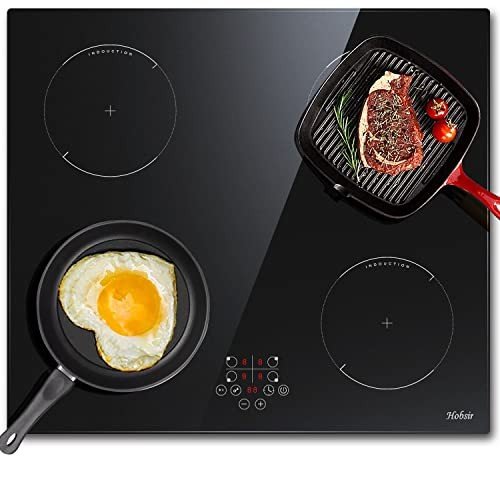Understanding Hobs and Ovens: A Comprehensive Guide for Cooking Enthusiasts
The kitchen is often concerned as the heart of the home, where cooking developments come to life. Two necessary parts of any kitchen are the hob and the oven. While they are both crucial for food preparation and cooking, many property owners may not fully comprehend the distinctions, functionalities, and numerous types available in the market today. In this short article, we will check out these appliances in information, assisting you make informed decisions for your culinary needs.
Table of Contents
- What is a Hob?
- 1.1 Types of Hobs
- 1.2 Benefits of Different Hob Types
- What is an Oven?
- 2.1 Types of Ovens
- 2.2 Benefits of Different Oven Types
- Choosing the Right Hob and Oven for Your Kitchen
- Frequently Asked Questions (FAQs)
- Conclusion
What is a Hob?
A hob, commonly referred to as a cooktop, is a cooking surface that you put pots and pans on to prepare food. It features a variety of heating aspects and is regularly installed on countertops. In modern kitchens, hobs come in different styles, technologies, and performances.
1.1 Types of Hobs
There are numerous kinds of hobs readily available in the market:
| Type | Description |
|---|---|
| Gas Hob | Uses burner for cooking, providing accurate temperature level control. |
| Electric Hob | Runs using electrical heating elements, commonly seen in strong or glowing types. |
| Induction Hob | Uses magnetic fields to heat pots and pans straight, promoting energy effectiveness. |
| Ceramic Hob | Functions a smooth glass top, making use of electric coils beneath the surface area. |
| Strong Plate Hob | Traditional electric hobs with exposed metal plates that warm up. |
1.2 Benefits of Different Hob Types
Gas Hobs:
- Quick heating and cooling.
- Visual flame control for precise cooking.
Electric Hobs:
- Even heating; ideal for simmering and boiling.
- Easy to clean up, specifically flat surfaces.
Induction Hobs:
- Energy-efficient as just the pot warms up.
- Safety functions, such as automated shut-off.
Ceramic Hobs:
- Attractive looks with a smooth surface.
- Even surface areas for easy cleansing.
Strong Plate Hobs:
- Cost-effective and durable.
- Great for fundamental cooking requirements.
What is an Oven?
An oven is a kitchen device used for baking, roasting, and broiling food. Ovens can be standalone units or built into kitchen cabinetry, providing different cooking methods that can boost or transform ingredients.
2.1 Types of Ovens
Comparable to hobs, there are multiple types of ovens, each with its advantages:
| Type | Description |
|---|---|
| Standard Oven | Operates with heating components, ideal for baking. |
| Convection Oven | Utilizes fans to distribute hot air, cooking food evenly and rapidly. |
| Microwave Oven | Cooks food using electro-magnetic radiation; ideal for reheating. |
| Steam Oven | Uses steam to prepare food, protecting wetness and nutrients. |
| Wall Oven | Built into the wall, providing benefit and aesthetic appeal. |
2.2 Benefits of Different Oven Types
Traditional Ovens:
- Simple to utilize with no complex settings.
- Versatile for various cooking approaches.
Convection Ovens:
- Faster cooking times due to air flow.
- Improved browning and crisping for baked products.
Microwave Ovens:
- Quick cooking or reheating of food.
- Energy-efficient for low-volume cooking.
Steam Ovens:
- Health-conscious cooking that keeps nutrients.
- Exceptional for baking bread and cooking veggies.
Wall Ovens:
- Convenient placement; conserves area.
- Less bending required to gain access to cooking dishes.
Selecting the Right Hob and Oven for Your Kitchen
When picking a hob and oven, aspects such as area, cooking design, and personal choices must be considered. Here's an easy guide to help you select:
Factors to Consider
- Cooking Needs: Evaluate your cooking practices. Do Ovens Online bake, or is stovetop cooking more prevalent?
- Space Availability: Measure your offered kitchen space. Some hobs or ovens may require more space than others.
- Fuel Type: Decide in between gas and electric, based on accessibility and personal preferences.
- Spending plan: Determine what you're prepared to spend and find choices within that range.
Quick Tips
- Focus on Efficiency: Look for energy-efficient models to decrease long-term costs.
- Read Reviews: Explore user evaluations to gather viewpoints on efficiency and dependability.
- Seek advice from Professionals: Seek recommendations from kitchen style experts when preparing your design.
Often Asked Questions (FAQs)
1. What is the difference in between a hob and an oven?
A hob is a cooking surface normally for stovetop cooking, while an oven is an enclosed space utilized for baking, roasting, and broiling food.
2. Can I use any pot on an induction hob?
No, induction hobs need magnetic cookware. Stainless-steel and cast iron pots work, however non-magnetic products like aluminum won't.
3. How do convection ovens differ from standard ovens?
Convection ovens utilize fans to circulate hot air for even cooking, whereas traditional ovens do not have this function.
4. Is it possible to have both a hob and oven as a single system?
Yes, there are range cookers that integrate a hob and an oven within one appliance, offering a comprehensive cooking option.
5. How do I tidy my hob and oven?
Many hobs and ovens have actually suggested cleaning approaches depending upon their materials. It is suggested to speak with the producer's directions for the best practices.
Comprehending the differences in between hobs and ovens is crucial for anyone looking to enhance their kitchen space or enhance their cooking skills. By understanding the different types, their advantages, and how to pick the ideal ones for your needs, cooking can end up being a more satisfying and effective experience. Whether you are an experienced chef or a beginner cook, the best mix of hob and oven can raise your culinary developments to brand-new heights.

